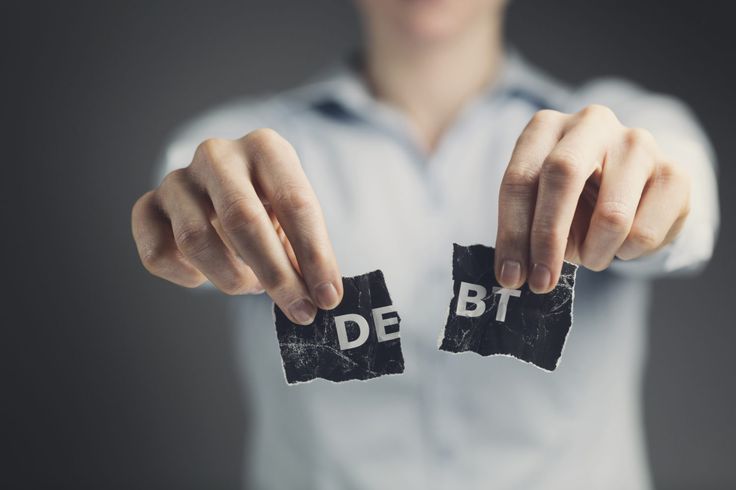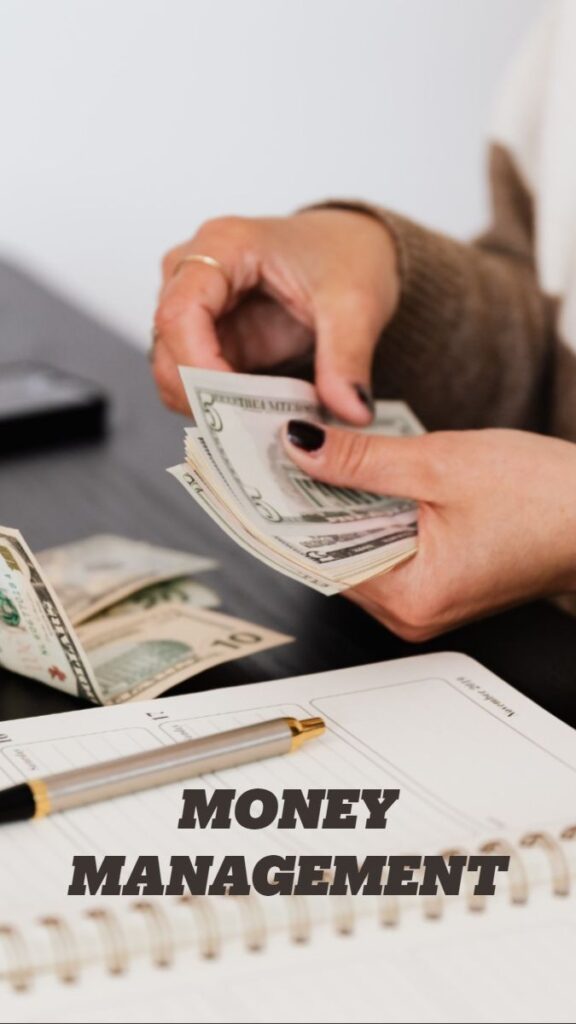
If you’re here, chances are you’re feeling trapped in debt, and trust me, I get it. Debt can feel like that toxic relationship you can’t quite shake, one that drains your energy controls your choices, and keeps you up at night. I’ve been there, feeling like freedom was a distant dream. But here’s the good news: just like any bad relationship, it is possible to break free.
In this guide, we’re going to tackle debt like that breakup you know you need, diving into tried-and-true strategies that worked for me. We’ll break this journey down into two phases: the “getting over” phase, where we confront the debt and face the hard truths, and the “moving on” phase, where we build healthy financial habits for a debt-free future. It won’t be easy, but every step will bring you closer to a life without debt. So without wasting much time, let’s get right into it.
The Getting Over phase

The 7 steps below will be our guide. Join me, let’s break up this relationship together!
1. Acknowledge and Acceptance: I have realized that the first step is to come face to face with the truth. I decided to accept that I was in a bad relationship with debt, and started devising means to break it up. Being in denial is going to get you nowhere. Acceptance is crucial in getting over and moving on when you know you’re in debt. Delulu is never the solulu in this case. Debt Doesn’t Disappear by Ignoring It.
2. Break Out a List: The next thing I did was write down all my debts, including amounts, interest rates, and monthly payments. I made sure my monthly debt payments and essential expenses were lower than my income. If you’re unable to cover your necessary bills, consider actions like negotiating with creditors or finding ways to increase your income. This helps you see the full picture and makes planning less difficult.
3. Create a Budget: Tracking my Income and Expenses by determining where my money was going each month. This helped to identify areas to cut back.

Allocate a portion of your budget to pay down debts systematically. Budgeting is the process of creating a plan for managing your finances by tracking your income and expenses. It helps you allocate your money effectively to meet your needs, save for goals, and pay off debts
Apportion your income to cover your expenses and goals. A common approach is the 50/30/20 rule:
- 50% for needs
- 30% for wants
- 20% for savings and debt repayment
- Develop a Repayment Strategy: After I had identified that I had no choice but to pay back what I owed, I needed a foolproof strategy and was keen on implementing the plans. Here are the two methods of repayment strategy I observed and utilized.

- Snowball Method: Focus on paying off the small debts first for quick wins, Those loans you know that are way below your income, ensure to get them out of the way. It is like getting over a breakup and you start getting rid of your ex’s properties like burning their clothes and pictures, Baby steps, but steps nonetheless.
- Avalanche Method: Pay off debts with the highest interest rates first to save money in the long run. Another idea is to go big or go even bigger. You can decide to take the bull by the horns and target those loans that are accompanied by huge interest rates. Try your hardest to pay them off so they do not keep accumulating interest. It would feel so relieving like a weight has been lifted off your metaphorical chest. This felt super liberating for me, and I am so certain you would feel the same too.
4. Eliminate Unnecessary Expenses: I made sure to prioritize my expenses by distinguishing between needs and wants.

In our society, I have discovered that much of what we buy falls into the “wants” category. While they may seem necessary, true needs are limited to essentials like housing, food, basic clothing (not designer or fancy items), heating, electricity, and some form of transportation. Everything else is generally a want.
Take a close look at your spending and cut out any unnecessary costs—this step is essential if you’re serious about getting out of debt. I remember when I was invited on a girls’ trip to Spain. We’d been planning it for weeks, and when I got a work bonus, it felt meant to be. But right before the trip, I had a tough conversation with myself.
I realized I needed to use that money to pay down one of my crushing debts instead. It was painful, and I probably cried for days, but looking back, I’m so proud of that decision. It was hard, but it was necessary.
Once you’ve pared your spending down to essentials, put any leftover funds toward your debt. Try the “Debt Snowball” method: pay the minimum on all your debts except the smallest one, focus extra funds on that, and once it’s gone, move on to the next smallest debt. Keep this up until all debts are cleared. Also, cancel any unused subscriptions and avoid non-essential expenses like extra meals out.
5. Find a side hustle, ASAP: Increasing your income is typically the next step.

Find a second or third job fast so you can earn more, and it helps to replace the losses you have incurred over the timespan of your debt. Explore freelance work, part-time jobs, or gigs to boost your income. You can sell unused or used Items: Declutter and sell items for which you no longer need to generate extra cash to pay off debt. For me, it was difficult to get a third job because my two jobs were already a whole lot, so I made sure to sell some clothes, shoes, and pieces of jewelry that could earn me some extra hundreds of dollars, together with my excellent two jobs and bonuses I worked my butt off to get, I was doing a fantastic job getting myself out of debt.
6. Get Professional Help: Sometimes, it is a lot to bear alone, you will require help from a professional who can be an accountability partner and keep your finances in check for you and with you.

Someone you can speak to freely and would be of great assistance to you. I made a closer relationship with Brian, who was an accountant at my place of work to give me financial advice that truly helped me.
- Credit Counseling: Consider speaking to a financial advisor or credit counselor for personalized advice and strategies.
- Debt Consolidation: Explore options to consolidate multiple debts into one loan with a lower interest rate.
7. Hurray; Celebrate Your Progress: It is an incredible feat to get this far and celebrating, albeit, mildly is a great idea.

Reward yourself for how tenacious, diligent, and accountable you have been so far, not by splurging, but by going to see an inexpensive movie or purchasing an inexpensive gift for yourself, because you have done such a great job. This part was my favorite, I was so excited after I cleared ALL my debts. I took myself on a much-needed affordable solo date that involved a spa treatment, with a manicure and pedicure. I felt super proud of myself, It will be so rewarding I can guarantee you.
The Moving on Phase

The steps below were those I implemented after getting out of the debts I was buried under, to ensure that I would never find myself in that sort of situation ever again.
1. Build an Emergency Fund
A crucial way to avoid debt is to establish an emergency fund that you can rely on for unexpected expenses. Having cash set aside for surprises like a sudden car repair or medical bill means you won’t have to resort to a credit card. I had to budget better and was strict with my savings and spending.

Experts typically suggest saving three to six months’ worth of essential expenses in your emergency fund but starting with a smaller, more achievable goal is fine. For instance, having $500 saved can be very helpful; if you get a flat tire, you’ll have the $200 needed to replace it without turning to a credit card, which could carry an average interest rate of nearly 23%, according to the Federal Reserve.
It’s best to keep your emergency savings in a high-yield savings account, allowing you to benefit from higher interest rates while ensuring easy access to your funds.
Recommendations for High Yielding Saving Accounts.
2. Develop a Savings Habit
Setting up automatic transfers from your checking account to your savings account can help you build your savings quickly. By moving that money out of your checking account, you reduce the temptation to spend it and lower the risk of going into debt.

You can automate savings for various purposes, such as your emergency fund, retirement fund (if you’re not already contributing to a workplace 401(k)), and college savings plans like a 529 plan. The ideal savings amount will depend on your situation, but following the 50/30/20 budget guideline, aim to allocate around 20% of your after-tax income to savings and debt repayment combined. I continue to be consistent with this rule and believe me, I have been debt-free for a long time now.
3. Start investing early

Student loan and credit card debt might lead you to postpone investing, but if you can create some budget flexibility to begin, it could benefit you in the long run. Investing encourages good savings habits, and the earlier you start, the more you can take advantage of compounding interest.
Recommendations for saving, budgeting, and investing.
- a. Make use of tools like Credit Karma or Mint to track debt and expenses easily.
- b. Apps like YNAB (You Need A Budget) or EveryDollar to help you stay on track with your chosen strategy.
- c. Truebill or Trim to automatically track and cancel subscriptions and negotiate bills.
- d.Fiverr or Upwork for finding side gigs that can supplement income.
- e. Platforms like NerdWallet help readers find balance transfer offers that work for them.
- f. Loan platforms like LendingClub or SoFi for debt consolidation options.
- g. Chime or Ally Bank for high-yield savings accounts to stash emergency savings.
- h. Platforms like Etsy, TaskRabbit, and Fiverr will help you start earning extra income fast.
- i. Investment Platforms like Betterment, Acorns, or Wealthfront for automating savings and investing.
As we wrap up, remember: breaking up with debt is a journey, not a quick fix. Each step you’ve taken is one more stride toward financial freedom and peace of mind.
The road to a debt-free life is full of small victories, challenges, and choices that lead you to a place of control, confidence, and empowerment over your finances. So keep going, stay disciplined, and celebrate every win—no matter how small.
You’ve taken the steps to reclaim your financial independence. Embrace the journey, let go of old habits, and look forward to a future where debt no longer holds you hostage. Here’s to moving forward and staying committed to a healthy relationship with your finances, because you deserve it!

- Subscribe to our newsletter for more tips on how to achieve financial freedom.
- Share your debt story below what’s your escape plan, and how are you working toward it?
- P.S. Blasting some Taylor Swift or Olivia Rodrigo would be great for you. Comment below about other great musicians whose music is great for post-break-up.